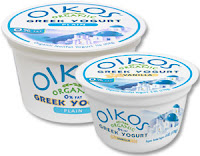Just because a dish is made with extra virgin olive oil doesn't make it healthy. Olive oil is still fattening (it contains 2,000 calories per cup). Canola oil has a similar nutritional profile and some products that tout it, like Weaver's gold popcorn which hit shelves last April, still hide hydrogenated oil (trans fats) in the ingredient list. "While olive oil is definitely a good alternative to butter, margarine or shortening, it may not even be the best option," says Davis. It's been praised because it's relatively high in monounsaturated fat. "But research overall suggests that polyunsaturated fat (which is found in higher amounts in oils such as canola) may be more beneficial than monounsaturated fat," he says.
14. "Fresh" Fast Food
The latest company to join Wendy's and Subway by latching on to the fresh, whole food trend that gained major momentum in 2011? Fast food giant, Burger King, home of the enormous, messy Whopper.
In an attempt to overhaul its image, the company released a new version of its beloved burger in August: the limited-time California version is "fresh" because it features - gasp - guacamole! The accompanying TV commercial plays up the freshness of the ingredients with visuals of lettuce and tomatoes being washed and sliced in slow motion, set to pulsating music. Before you go into a trance and actually start believing a "guac'd and grilled" Whopper with "ripe tomatoes and crisp lettuce" is any better for you than the flame-broiled Whopper of yesteryear, here's a little reality check: at 820 calories, it has almost 25% more calories than a regular Whopper at 620 calories.
15. "Healthy" Candy
Natural candy certified as organic (Yummy Earth), infused with antioxidants (Snap Infusion Supercandy), made with honey (Gimbal's Honey Lover's jelly beans), and touting lower calories (Skinny Cow's chocolate candy), exploded in 2011. But guess what the number one ingredient in candy is? Some type of sugar. And as established earlier this week, natural doesn't always mean nutritious and all sugar is created equal once it goes in our mouths.
Plus, most of these "healthy" candies are comparable to conventional kinds. For example, six pieces of Skinny Cow Dreamy Clusters (with caramel filling) packs 120 calories - exactly the amount found in six Hershey's Caramel Kisses. And even though they're nutritionally similar, the diet candy may be less satisfying. A recent study from Yale University found that people who were told they were drinking a 620 calorie milkshake experienced a faster drop in the hunger hormone ghrelin compared with those drinking a milkshake they were told contained 140 calories (both shakes actually contained 360 calories). The slower drop in ghrelin can cause a delay in satiety that may lead people to take in more caloires from foods labeled as healthy.
The latest company to join Wendy's and Subway by latching on to the fresh, whole food trend that gained major momentum in 2011? Fast food giant, Burger King, home of the enormous, messy Whopper.
In an attempt to overhaul its image, the company released a new version of its beloved burger in August: the limited-time California version is "fresh" because it features - gasp - guacamole! The accompanying TV commercial plays up the freshness of the ingredients with visuals of lettuce and tomatoes being washed and sliced in slow motion, set to pulsating music. Before you go into a trance and actually start believing a "guac'd and grilled" Whopper with "ripe tomatoes and crisp lettuce" is any better for you than the flame-broiled Whopper of yesteryear, here's a little reality check: at 820 calories, it has almost 25% more calories than a regular Whopper at 620 calories.
15. "Healthy" Candy
Natural candy certified as organic (Yummy Earth), infused with antioxidants (Snap Infusion Supercandy), made with honey (Gimbal's Honey Lover's jelly beans), and touting lower calories (Skinny Cow's chocolate candy), exploded in 2011. But guess what the number one ingredient in candy is? Some type of sugar. And as established earlier this week, natural doesn't always mean nutritious and all sugar is created equal once it goes in our mouths.
Plus, most of these "healthy" candies are comparable to conventional kinds. For example, six pieces of Skinny Cow Dreamy Clusters (with caramel filling) packs 120 calories - exactly the amount found in six Hershey's Caramel Kisses. And even though they're nutritionally similar, the diet candy may be less satisfying. A recent study from Yale University found that people who were told they were drinking a 620 calorie milkshake experienced a faster drop in the hunger hormone ghrelin compared with those drinking a milkshake they were told contained 140 calories (both shakes actually contained 360 calories). The slower drop in ghrelin can cause a delay in satiety that may lead people to take in more caloires from foods labeled as healthy.











